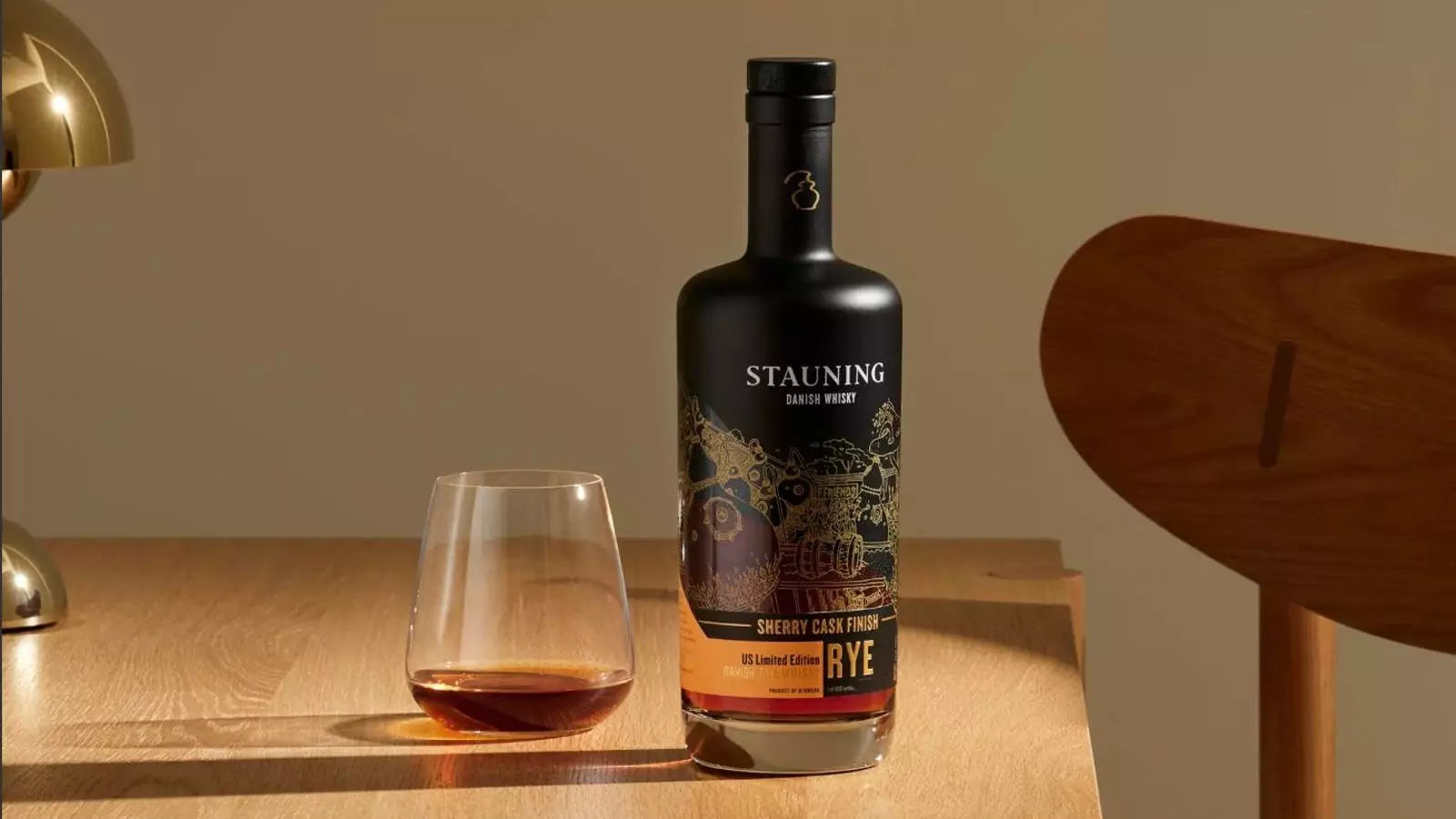When one thinks of acclaimed whisky regions, Denmark may not immediately spring to mind. However, Stauning Whisky is diligently working to change that perception. Set against the backdrop of a tranquil Danish landscape, about a three-and-a-half-hour car ride from Copenhagen, Stauning has steadily gained recognition for its artisanal whisky-making. Founded nearly 20 years ago on a remote farm, the distillery is attempting to carve out a distinct niche in the global spirits market. Its latest endeavor, the Sherry Cask Finish Rye, signals a significant evolution in the brand—marking its first exclusive entry into the American whisky scene. As whisky enthusiasts take their first sips, the question remains: What has taken Denmark so long to make its mark in the whisky world?
Lasse Vesterby, the co-founder and CEO of Stauning, has been the guiding force since its inception. His story traces back to 2005, when he and a group of friends began experimenting with local grains in a repurposed butcher shop once owned by his father. The spark of curiosity ignited their journey, as they set out to understand why Denmark lacked a whisky-making tradition. Rather than dabbling in the vast array of spirits, these friends were determined to create something authentic and rooted in their surroundings.
Moving from a simple hobby to a full-fledged distillery took considerable effort. Vesterby focused on traditional whisky production methods, inspired by the centuries-old techniques prevalent in Scotland, while placing a particular emphasis on using rye over barley. This commitment to craftsmanship shaped Stauning whisky’s identity, giving it a distinctly Danish character. “We aim for a refined and smooth rye that’s on par with any great single malt,” Vesterby explains—a philosophy that continues to drive the brand.
Creating a whisky category from scratch is no small feat. In the early years, the term “Danish Rye” was virtually non-existent, creating an uphill battle to gain traction in an industry dominated by longstanding traditions. Still, Stauning persevered. By 2015, their efforts hadn’t gone unnoticed; Diageo, a powerhouse in the global spirits landscape, invested £10 million through its Distill Ventures program. This financial backing allowed Stauning to broaden its vision.
Three years later, Stauning celebrated the opening of a sophisticated new distillery equipped with 24 copper pot stills and an impressive production capacity of 900,000 liters per year. The facility, despite its rural charm, quickly became a popular destination, attracting approximately 17,000 visitors annually. Guests are treated to a comprehensive experience—understanding every step of the whisky-making process, from the sourcing of local grain to the maturation and bottling. This immersive approach not only highlights Stauning’s craftsmanship but also cements its place in Denmark’s cultural narrative.
As the craft distillery burgeoned, so did its aspirations to reach international markets. By 2023, Stauning was fully prepared to introduce its non-age-statement Danish Rye to American consumers, priced at $60 a bottle. The introduction of the Sherry Cask Finish Rye, aged to perfection in Pedro Ximénez and Palo Cortado casks from Jerez, Spain, represents a key milestone in their journey. This whisky, boasting an impressive 101-proof strength, presents a bouquet of warm toffee aromas, complemented by hints of dill.
The palate journey offers a delightful medley of spices, from cardamom warmth to the zest of orange, rounding off with earthy undertones of tobacco and prunes. With only 800 bottles allocated for the US market, the release is marked at a premium price of $75, heralding a limited but potent entry into the competitive landscape of American whisky drinkers.
With plans for further global outreach, including partnerships with renowned chefs and tastemakers, Stauning aims to showcase the nuanced flavors inherent to Danish culinary traditions. Vesterby’s vision encompasses not only expanding their market share but also deepening connections with consumers. Collaborations, like the upcoming limited-edition Danish Pastry project with one of Chicago’s most esteemed bakeries, reflects a commitment to intertwining whisky culture with Denmark’s rich gastronomic heritage.
On the ground in the US, Stauning seeks to recruit bartenders as their ambassadors, playing a crucial role in introducing Danish rye into classic American cocktails. Vesterby emphasizes the importance of bartender engagement, asserting that their enthusiasm is vital for establishing a foothold within the American market.
As Danish culinary artisans have risen to global prominence, Stauning is uniquely positioned to mirror this trajectory within the spirits industry. The commitment to craftsmanship, traditional methods, and community engagement sets a promising course for the Danish rye category. As Stauning continues to press forward, the world should keep a watchful eye on the unfolding narrative of Danish whisky—it promises to be a tale rich with flavor, culture, and innovation.


Leave a Reply